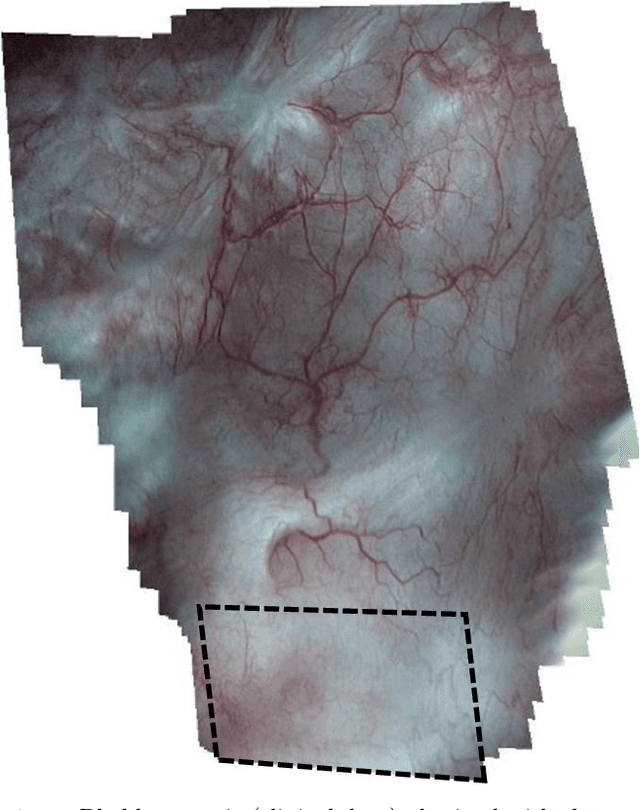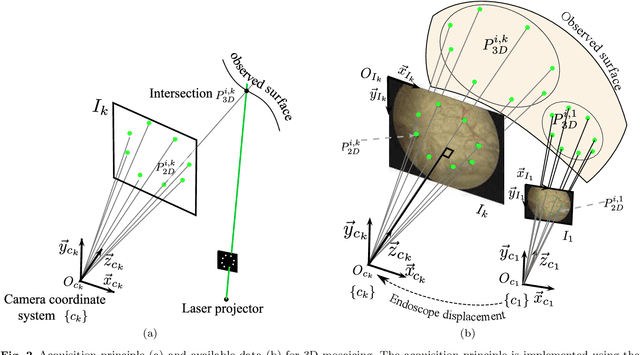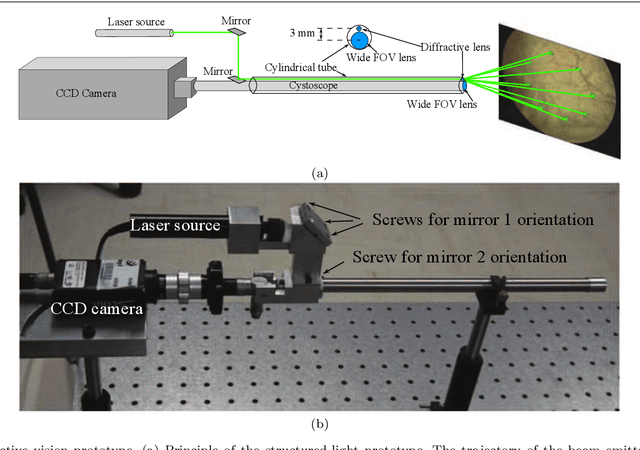Construction of extended 3D field of views of the internal bladder wall surface: a proof of concept
Paper and Code
Jul 16, 2016



3D extended field of views (FOVs) of the internal bladder wall facilitate lesion diagnosis, patient follow-up and treatment traceability. In this paper, we propose a 3D image mosaicing algorithm guided by 2D cystoscopic video-image registration for obtaining textured FOV mosaics. In this feasibility study, the registration makes use of data from a 3D cystoscope prototype providing, in addition to each small FOV image, some 3D points located on the surface. This proof of concept shows that textured surfaces can be constructed with minimally modified cystoscopes. The potential of the method is demonstrated on numerical and real phantoms reproducing various surface shapes. Pig and human bladder textures are superimposed on phantoms with known shape and dimensions. These data allow for quantitative assessment of the 3D mosaicing algorithm based on the registration of images simulating bladder textures.
 Add to Chrome
Add to Chrome Add to Firefox
Add to Firefox Add to Edge
Add to Edge